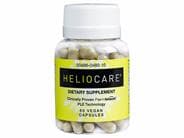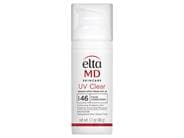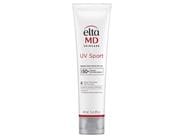Skin cancer is the most common cancer in the United States: An estimated 9,500 people are diagnosed with it every day. “Skin cancer can affect anyone, regardless of skin color, gender or age, but the scary part of this is that it’s affecting younger and younger patients each year I practice,” says board-certified dermatologist and LovelySkin CEO Dr. Joel Schlessinger. May is Skin Cancer Awareness Month, making it the perfect time to learn how to stay safe in the sun and protected from skin cancer, which is why we’re sharing five essential sun safety tips:
It’s recommended that you apply a broad-spectrum sunscreen every day, rain or shine. Wearing a broad-spectrum sunscreen will shield your skin from both UVA and UVB rays. We recommend choosing a formula like EltaMD UV Clear SPF 46 Broad Spectrum Sunscreen. This oil-free sunscreen is gentle enough for sensitive and acne-prone skin.

If you’re going to be outdoors for an extended period of time, we suggest using a water-resistant sunscreen like EltaMD UV Sport Water-Resistant Broad Spectrum SPF 50. You’ll need to apply one and a half ounces—or enough to fill a standard shot glass—to adequately cover your entire body. “Reapplying sunscreen is just as important as wearing it to begin with,” Dr. Schlessinger says. “You should reapply your sunscreen every two hours or immediately after swimming or sweating heavily. If reapplication is not possible, then clothing with sun protection (UPF) or other barriers are incredibly important.”
During the peak sunshine hours of 10 am and 4 pm, the sun is directly overhead and UV radiation is at its highest intensity. “During peak hours, you can avoid damaging sun exposure by staying in the shade or simply moving to a different, safer spot that is out of the sun,” Dr. Schlessinger says. The Skin Cancer Foundation suggests using the “shadow rule” to determine when you should seek shade. If your shadow is shorter than you are, the sun’s UV radiation is stronger. If your shadow is longer than you are, the UV radiation is less intense.
Wide-brimmed hats and UV-blocking sunglasses can both provide additional sun protection. You can also find clothing with a UPF rating. UPF, or ultraviolet protection factor, is a measure of UV protection provided by the fabric itself and ranges from 15 (good) to 50+ (excellent).

You can also supplement your regular sunscreen with Heliocare Ultra Antioxidant Supplements, which are designed to help build up your body’s natural defense against damaging UV rays. “These supplements are not a substitute for regular sunscreen use, but they can provide an additional layer of protection against photoaging and other sun damage,” Dr. Schlessinger says.
Contrary to popular belief, there is no such thing as a safe tan. Any change in your skin is a sign of sun damage, whether it’s from the sun or a tanning bed. Tanning bed use can lead to skin cancer because the lamps in these beds give off much more radiation than the sun. It’s been shown that women who use tanning beds before the age of thirty are six times more likely to be diagnosed with melanoma, a type of skin cancer.
It’s important to schedule an annual visit with a board-certified dermatologist so they can address any skin concerns you may have and also perform a comprehensive skin exam to check for any signs of skin cancer. After your exam, you should always ask your dermatologist when they’d like to see you return for your next skin check. A change in a mole or skin growth is often the first sign of skin cancer, so be sure to make an appointment to see your dermatologist if you notice signs of change over time, including bleeding, irritation, itching or dark coloration. “Always take a changing mole seriously and let your dermatologist know this when you visit, especially if it is bleeding,” Dr. Schlessinger says.
Looking for more sunscreen suggestions? Check out the best sunscreens for oily skin, dry skin, rosacea and more at the LovelySkin Sun Care Blog.













